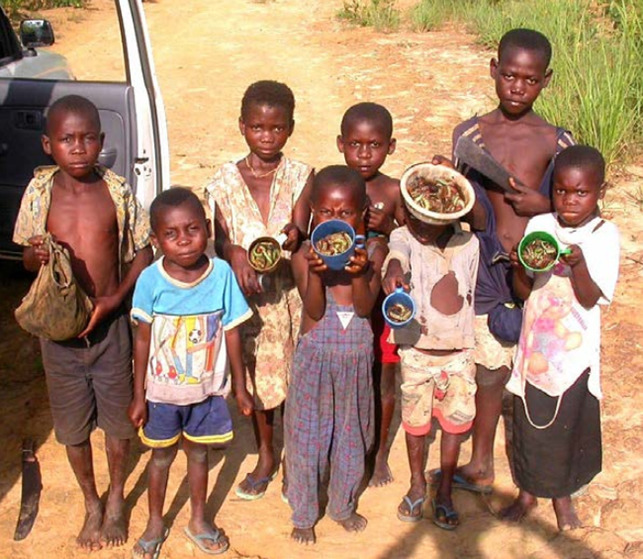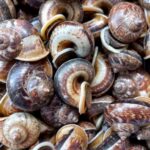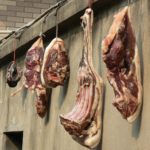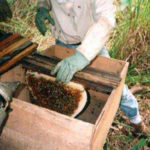Children are the main caterpillar collectors, though most people while walking in the bush, keep a constant watch for them. Frequently people will bring back young caterpillars and place them on trees near their homes where they can keep an eye on them. Many villages have a few Acacia auriculiformis trees planted nearby and these are used to rear the caterpillars of several species until they are ready to eat.

Some farmers have taken this a step further and allow a proportion of caterpillars to pupate and frequently, for certain species, the resulting moths will lay eggs on the same or nearby trees. One farmer purchased Cirina forda larvae in the local market, introduced them to an area of savanna with plenty of Crossopteryx febrifuga, and has been able to harvest the caterpillars regularly ever since.
A good knowledge of local plants is vital when collecting caterpillars. For caterpillars that feed on poisonous plants, there are certain methods for eliminating toxicity when preparing them for eating. And small caterpillars, the larvae are boiled for a long time. For example, this is the case with Mimbota mbota harvested on Millettia versicolor, it is also the case with Mfundi harvested on plants known as Kifundi (Millettia spp.).
Preparing caterpillars for cooking
When cooking these edible caterpillars in Congo, there is often a large layer of foam that forms on the surface. For large caterpillars, the intestine is usually emptied to avoid the toxicity of the plants consumed. Toxicity is also avoided by keeping the larvae in a calabash or container for some time so that the intestine is completely emptied of toxic material. For the caterpillar Nkankiti (Anphe panda) and Nkombo nseke, it is the long stinging hairs that are the problem. To prepare these caterpillars, the hairs must first be removed by roasting on a metal sheet or in a frying pan over the fire.
Caterpillars are normally boiled with salt and hot peppers until almost dry. Even though several species have spines these are not removed. The caterpillars are then eaten directly or cooked with peanut butter, or the seeds of pumpkin or sesame. They can also be cooked with cassava leaves. Nkankiti (Anaphe panda) larvae contain a good amount of fat so can be fried without additional oil.
Occasionally large enough quantities of caterpillars appear and are collected, boiled, and dried for later use or transport to distant markets. Minsangula caterpillars in particular, though not frequently found, may be collected by the sack full when they do appear. Smoking is commonly used for large quantities, allowing caterpillars to be stored for up to 3 months. However, the nutritional value is lowered and there is the danger that eating smoked caterpillars may cause cancer (Balinga et al. 2004).
Nutritional value of some edible caterpillars
More articles on this website about caterpillars can be found via the following links:
Edible caterpillars in D.R. Congo, Introduction
Edible caterpillars in D.R. Congo, Part 1
Edible caterpillars in D.R. Congo, Part 2
Edible caterpillars Nudaurelia sp.
Edible caterpillars for food in Congo
Stinging nettle slug caterpillar in Vietnam
Green caterpillars, called ‘Kaba’
___________________________________________________________________________________________________________
Text and all photos at this article © Paul Letham. The professional background and contact information of the author of this article can be found here.
.






